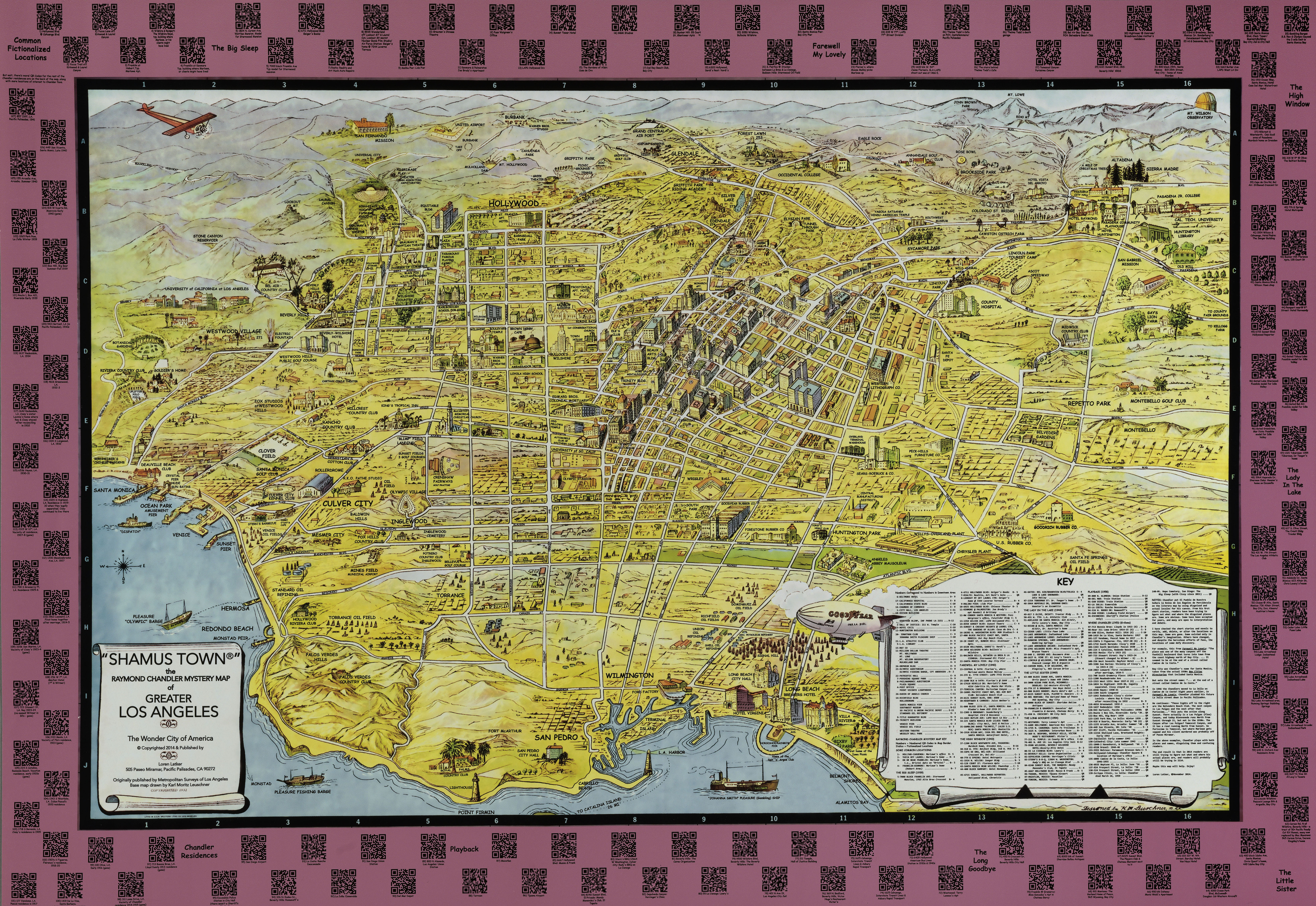
Even authors who create elaborate fictional landscapes need directions sometimes. That much is clear in “Mapping Fiction,” a new exhibition at the Huntington Library, Art Museum, and Botanical Gardens in California, which examines the ways authors and cartographers have mapped out fantastical worlds both like and unlike our own.
The show coincides with the centennial of James Joyce’s opus, Ulysses, and sure enough, several relics related to the book—including a first edition copy, a typescript draft of one of its chapters, and various intaglio prints of Dublin as described by the author—are on display.
But it wasn’t just the anniversary of Joyce’s novel that inspired the show, explained Karla Nielsen, the Huntington’s curator of literary collections who organized the effort.
“Joyce adamantly did not want Ulysses published with a schema, a map of Dublin, any type of explanation really,” Nielsen said in a statement. “His resistance provoked me to think about how maps function when inset into a print novel. How do they influence how readers imagine the narrative?”
Octavia E. Butler, Map of Acorn from notes for Parable of the Talents (ca. 1994). © Octavia E. Butler. Courtesy of The Huntington Library, Art Museum, and Botanical Gardens.
Some 70 items gathered from the museum’s collection offer viewers answers to the curator’s prompt. Among the highlights are elaborate maps that accompanied early editions of J. R. R. Tolkien’s The Lord of the Rings trilogy, Robert Louis Stevenson’s Treasure Island and Kidnapped, and George R. R. Martin’s A Game of Thrones. Meanwhile, Octavia E. Butler’s hand-drawn—and unpublished—diagrams of her own imagined landscapes provide a peek into her processes of writing Parable of the Talents and Parable of the Trickster (which was never published).
There are plenty of treats for rare book fans, such as early editions of Miguel de Cervantes’s El Ingenioso Hidalgo Don Quixote de la Mancha (The Ingenious Gentleman Don Quixote of La Mancha), Jonathan Swift’s Gulliver’s Travels, and Jules Verne’s Around the World in 80 Days. The latter is presented next to a vintage board game inspired by Nellie Bly, a journalist who herself circumnavigated the world following the publication of Verne’s novel. (It only took her 72 days).
See more images from “Mapping Fiction” below.
Map from front endpapers to The Odyssey of Homer (1935). © Oxford University Press, Inc. Courtesy of The Huntington Library, Art Museum, and Botanical Gardens.
D.W. Kellogg & Co., The Open Country of a Woman’s Heart (1833-42). © Nancy and Henry Rosin Collection. Courtesy of The Huntington Library, Art Museum, and Botanical Gardens.
Map from Ludvig Holbergs Nicolai Klimii iter svbterranevm (1741). © The Huntington Library, Art Museum, and Botanical Gardens.
David Lilburn, “The Quays” from In medias res (2006). © David Lilburn, 2021. Courtesy of The Huntington Library, Art Museum, and Botanical Gardens.
A map from Robert Louis Stevenson’s Treasure Island (1883). Courtesy of The Huntington Library, Art Museum, and Botanical Gardens.
McLoughlin Bros., “Round the World with Nellie Bly” (1890). Courtesy of Jay T. Last and The Huntington Library, Art Museum, and Botanical Gardens.
“Mapping Fiction” is on view through May 2 at the Huntington Library, Art Museum, and Botanical Gardens in San Marino, California.